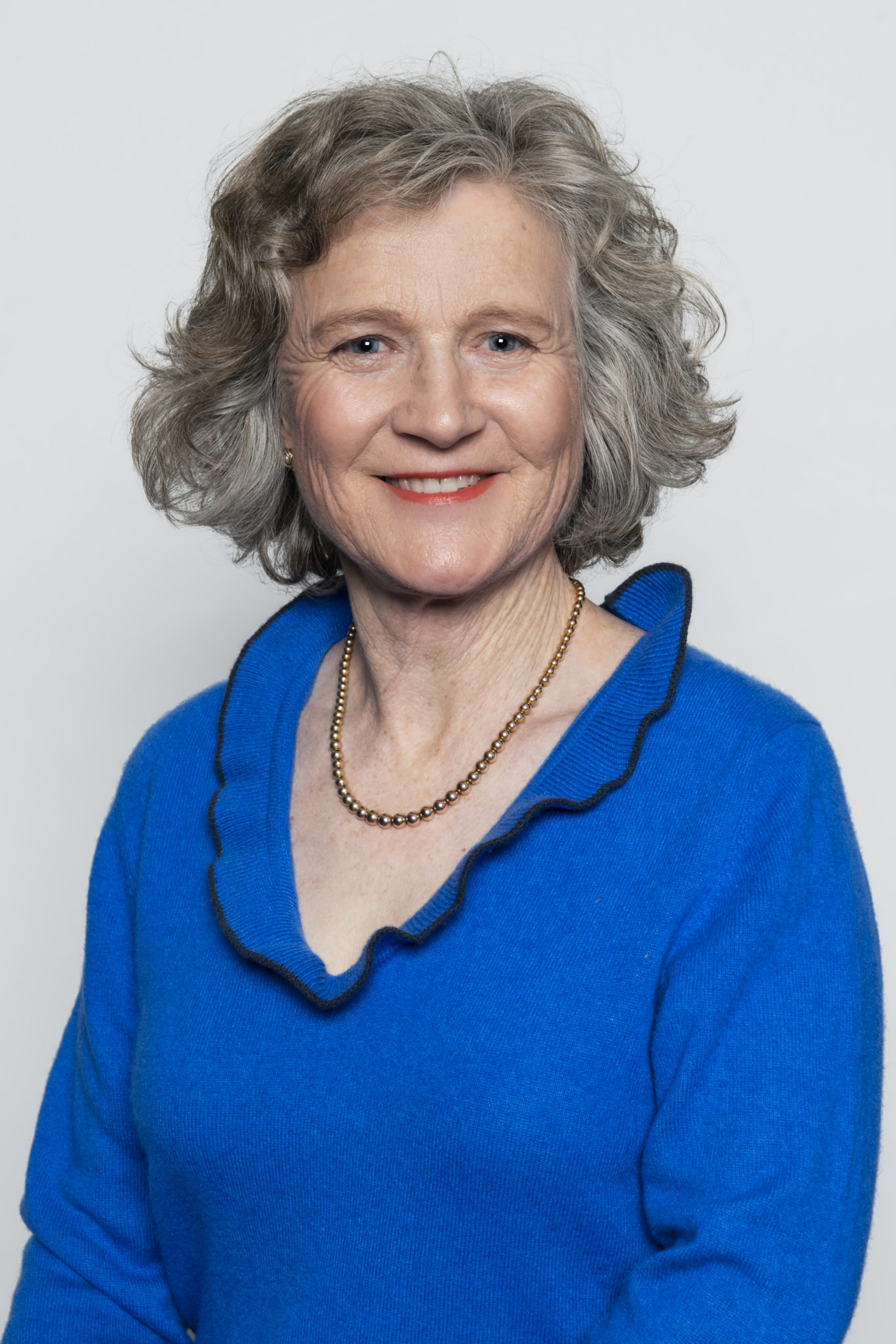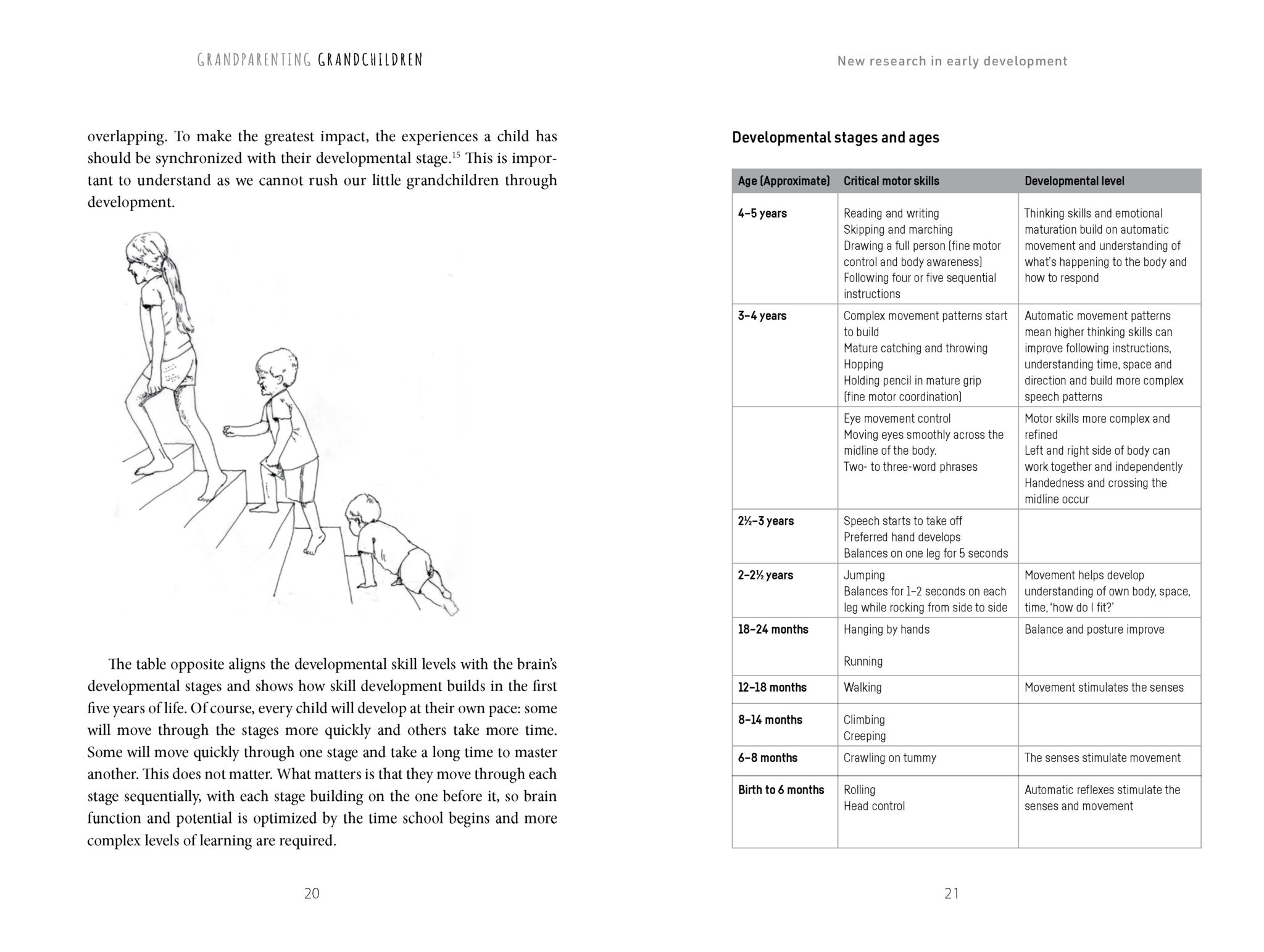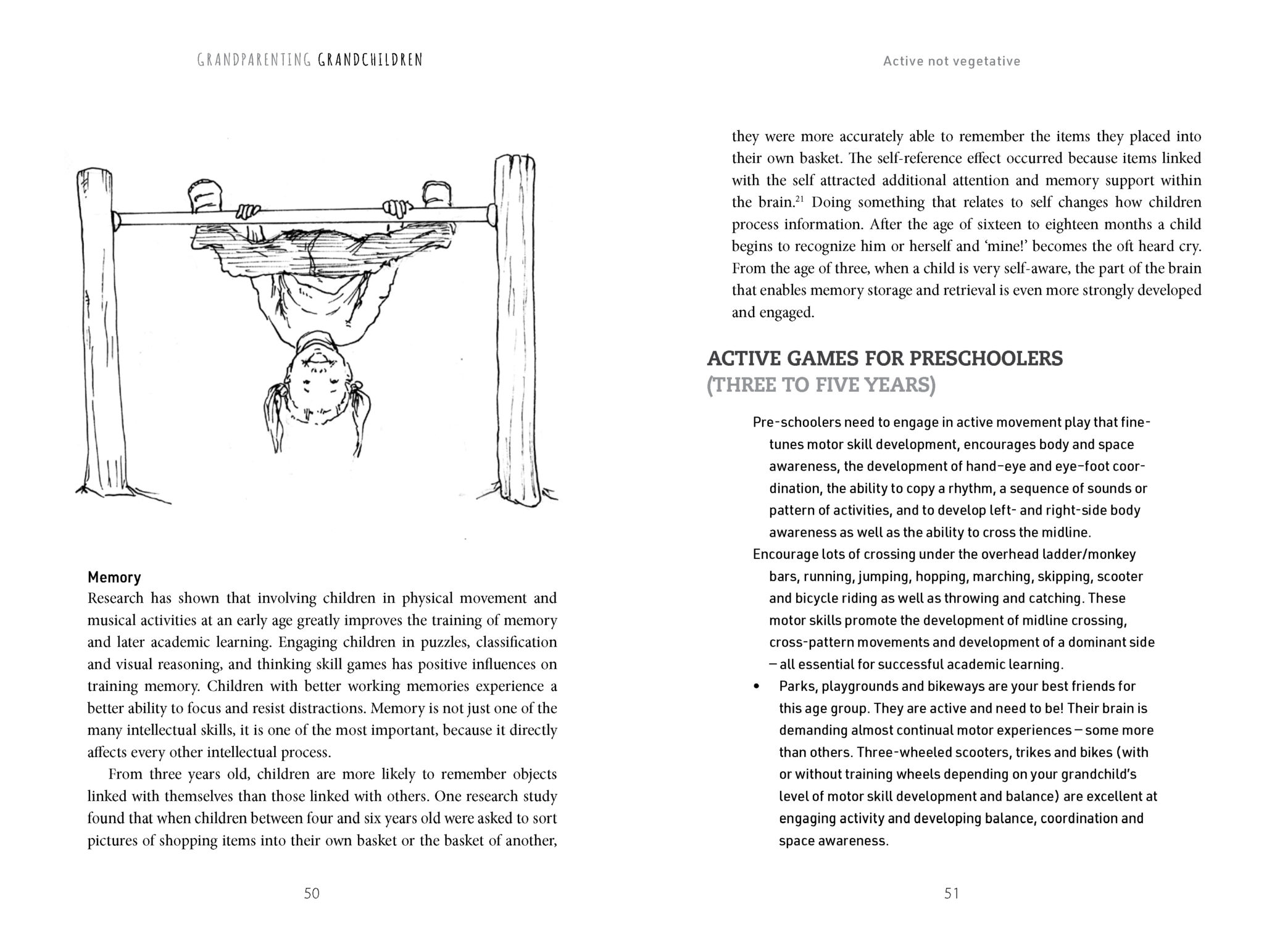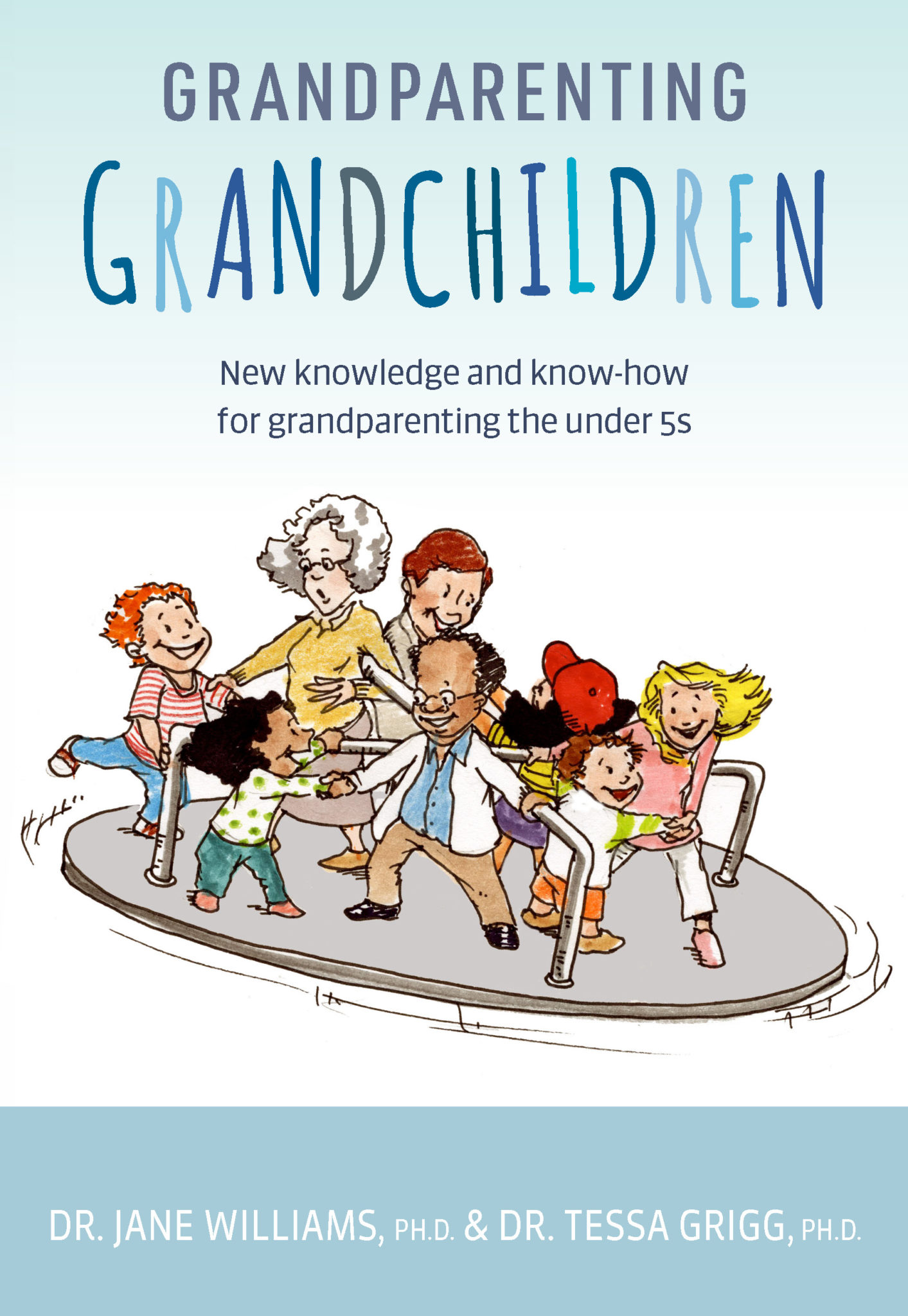The world continues to change and we’re learning to adapt as we go. It’s not limited to one gender, one age-bracket, one country. Even those who might be considered ‘set in their ways’ are needing to adapt. Today, it’s not so uncommon for parents to go back to work as soon as possible – leaving their children with carers. Sometimes the grandparents are called on to be those carers – which raises the question: what’s changed in child-rearing and what do grandparents need to know?
Grandparenting Grandchildren is the first guide of its kind written specifically for grandparents, and aims to help them raise well-rounded, ready-to-learn, happy grandchildren, written by experts Dr Jane Williams and Dr Tessa Grigg.

Dr Jane Williams has been working with families and young children for over 45 years. She is currently the Director of ToddlerROO, KindyROO and GymbaROO, and an Adjunct Senior Lecturer in the College of Health Sciences at James Cook University, Queensland. Jane’s key focus in the last 20 years has been on the well-being of babies and very young children, particularly in relation to their neurological health and how this plays a fundamental role in a child’s later ability to enjoy school, learn easily and be successful in life.

Dr Tessa Grigg has a wide range of experience within the Early Childhood Education field. She is currently the Research and Education Manager for ToddlerROO, KindyROO and GymbaROO, and a part-time lecturer and teaching assistant at the University of Canterbury, New Zealand. She has taught in a Primary School, supervised a Pre-school with specialist work in the sensory-motor area, worked as a Child and Family Therapist, taught adult students in the area of teaching and child development, and has owned and operated a GymbaROO centre for 9 years.
As you are both members (Jane, you are the Director, Tessa you are the Research and Education Manager) of the GymbaROO and KindyROO franchises, what part of that experience made you decide to write this book?
JW: Gymbaroo has been the epicentre of my life for many years. As the Founder’s daughter, my GymbaROO journey began when my oldest son (now 40) was just a baby. I have been a franchisee (Townsville), the Editor of its parent magazine (First Steps – now an online newsletter), and the Research and Education General Manager until 2019, when Tessa took over the reins of this vital role. During this time, I have seen an increasing number of grandparents involved in the care of their children. In the past, one or two grandparents would accompany their grandchild to GymbaROO classes each week, but now there are as many as four grandparents in every class! I have also seen some extremely dedicated grandparents bring every grandchild along to GymbaROO classes until the child was too old to attend. One grandmother made it her ‘job’ to bring 16 grandchildren along to class every week, over 12 years. Some years she had four grandchildren attending different classes every week. After class, she always stopped at the local café for a cup of tea (her) and a honey sandwich (her grandchild)! Now that’s dedication! This inspired me to write a book for all those grandparents who want to do their best for their grandchildren, perhaps are unable to go to GymbaROO regularly or just want to know the latest early childhood development information and what they can do to best help their grandchild grow and thrive while in their care.
TG: My GymbaROO experience started in 1995 when I was trained by Jane’s mother, Marg Sassé. Once teaching at GymbaROO, I needed more good quality music, so in true Kiwi style, I made some. Others wanted it too and with Marg’s approval, 700 songs were recorded by my business called Tessarose. As the mother of a 21 year-old, I have not reached grandmother status, but luckily my neighbour’s child has appointed me as one of his grandmothers. I also have many friends who are asking questions about what they can do for their grandchildren. When Jane invited me to be part of this project, I was delighted, as I could see a clear path to help prepare children for a very different world from the one we grew up in.

How has ‘care for young children’ changed? Do we know more now than when grandparents were raising their own children?
JW: Caring for the very young has changed over the past 40 years due to the huge increase in long-term studies that have directly investigated the effects of certain early childhood experiences children’s health, development, learning and success in later life. We now know far more about early development, what opportunities and experiences are best for babies, toddlers and pre-schoolers and the repercussions if these experiences are adverse or overlooked.
TG: Also through new technologies we can see how the brain works and what is good for the brain. In many cases researchers have shown through MRI scans, that simple things such as good quality movement, touch, talking with children and music give the brain the type of workouts it needs.
I asked my mum what she would want to bring to raising my kids, and she said that she would want to incorporate the values she learned in her childhood (being outdoors, courtesy, being self-reliant) with aspects of growing up in today’s modern society (use of technology, independence, knowing they are heard and supported). How can grandparents and parents work together to find the right way to blend the ‘old and the new’?
JW: One of the most important aspects of caring for children is to make sure ‘everyone is on the same page’ about what that ‘looks and feels like’ and how consistent that is across generations and families.
There are challenges for grandparents in that they need to recognise and acknowledge that there are’ new ways of doing things’, as well as for the parents, who should not ‘throw the baby out with the bath water’ when adopting the new ways, as many of the ‘old ways’ still have merit. Of course, there will be differences between perspectives on how care should be managed, which needs to be discussed. For example, riding scooters may be forbidden inside at Nana’s house, but allowed at home (or vice versa) or meals must be eaten at the dining table at Nana’s, but ‘the wandering grazer’ is acceptable at home. There will always be differences, and the trick is to discuss what is acceptable and what is not and to come to an agreement. Most of these matters are trivial, and it does not harm a child in any way to learn that different rules apply in different settings (as that is the way of the world), but for some matters, it is important to be consistent. Discuss behaviour management strategies (these have changed markedly over the years), discuss bedtime routines, dietary requirements, limitations and what are suitable ‘treats’ (there are a lot more children with food intolerances these days and no one is thankful for a child returned home that is hyperactive and challenging to manage because a grandparent thinks ‘a few sweets won’t harm my grandchild’!), make sure you are all clear about time limits on exposure to technology and screen time, and when heading outside to play sun protection measures are important to understand. This is not a complete list of discussion (and agreement) points, but gives you an idea of where knowledge (and action) has changed.
TG: I agree with everything Jane has said. Respectful communication will always make things easier.

You mention in your book that young children need both time for structured play and unstructured play – what is the difference between these and why are both important?
JW: Structured play is usually adult-directed and the child follows a set of rules or guidelines on a game or activity. For example, an obstacle course maybe set up in the backyard, or inside on a rainy day, for the child to follow. Structured play is often a precursor to unstructured, imaginative play, but it also has a purpose. For example, the child starts to rearrange the obstacle course pieces or move along them in a different way. Importantly, structured play allows an adult to provide the specific kinds of opportunities and experiences a child needs at various stages in their development, so a child does not miss developing certain skills. This is particularly important for children who may have some developmental challenges. If something is too hard then they are likely to avoid the activity, but when it is structured in a way that makes it achievable then a child is more likely to ‘have a go’ and persist in learning that new skill. This makes structured play an important part of development and learning.
Unstructured play, or ‘free play’ is also important. It gives the child an opportunity to be creative, invent new ways of doing things without an adult superimposing their own ideas and ways. It gives ‘free reign’ to the imagination and builds skills through ‘trial and error’ learning, giving a child time to ‘work things out’. Sometimes adults need to inspire and provide the opportunities to engage in unstructured play-time, such as taking a child to a playground or parklands or making sure the ‘dress-up box’ has lots of items from which to choose. But once the child has started to invent their own game, adults can still participate but they must follow the child’s rules without imposing any of your own rules! For example, I have taught my granddaughter to play memory games by using matching picture cards. We have played this game for some time. Last time we played, my granddaughter told me there was a new set of rules to follow. This time we did not need to match exact pictures, but rather if they ‘belonged together’ i.e. were animals, or fish or people, then that was a ‘match’. It worked well and I noticed that she was now able to categorise pictures rather than just match. We then moved on to laying the cards out in a line to follow a trail around the house. The final ‘card game’ involved trying to flick them into a basket with our fingers! From structured, to unstructured imagination, creativity and learning were on show.
TG: I, too, believe that there needs to be a good balance between structured and unstructured play. As Jane has said, quite often children gather ideas from the structure to then be able to create something less structured, or still structured but with their own mark on the play. Early childhood is when there is so much brain development happening and children learn more when they can figure something out on their own. Always handing them activities on a plate stifles their creativity. Keeping the balance extends them, presents new ideas, and yet gives them space to extend themselves.

What are some of the physical and mental benefits of active movement – even for little children?
TG & JW: Where do we start! We have devoted much of the book to this very topic. In a nutshell: Active movement creates healthy bodies and brains, from the cradle to the grave, we need to move. When babies move, their brains grow and mature. When children move, they strengthen the neural pathways and increase their academic skills. When adults move they help maintain a healthy body and brain. When a brain is functioning well, learning and life are easier. We want grandparents to know how to provide children with the most effective movement opportunities, and so we wrote a book with much of that information in it!
What is your strongest ‘take-away’ message from your book?
JW: The first 5 years of life lay the foundations for all later learning and life successes. Grandparents can play an active role in helping their grandchildren be the best they can be, without the pressures that normally come with everyday life and parenting. Grandparents are often perfectly placed to assist parents in providing opportunities and experiences that are not only fun for their grandchildren but have a purpose.
TG: Time with your grandchildren is the greatest gift you can give them. We remind grandparents that many things they did with their own children still work well with this younger generation. We have collated the new information and given the reasons why some oldies are goodies! But we also signpost the changes in what children need now.


